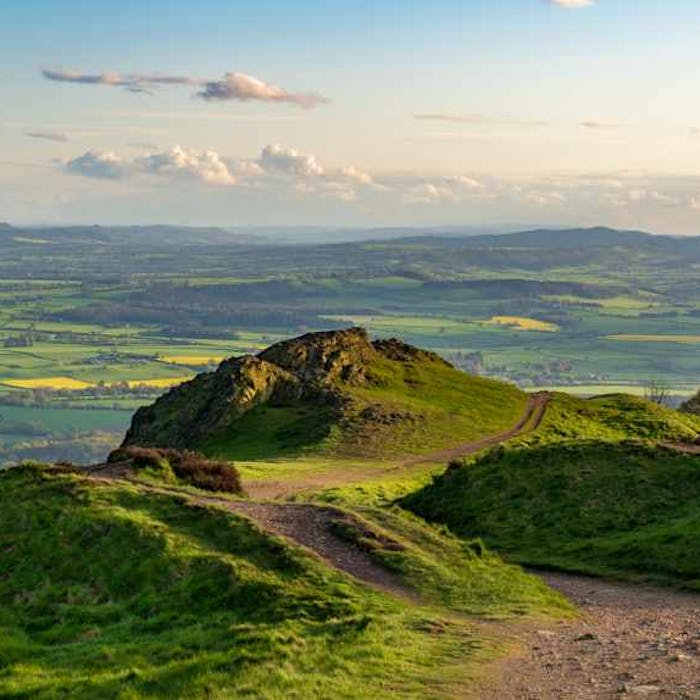
The Wrekin - a Shropshire landmark
The Wrekin is a hill within the northern panhandle of the Shropshire Hills Area of Outstanding Natural Beauty. It rises above the Shropshire Plain to a height of 407 metres, and is located five miles west of Telford new town, it is a prominent landmark that signals the entrance to Shropshire for travellers.
The Wrekin is formed from some of the oldest rock in the area (Cambrian period, 545-510 million years ago), including lava and volcanic ash. However, it is not an extinct volcano, as popular belief sometimes suggests, but is composed of volcanic rocks. The earliest mention of the name occurs in a charter of 855, when it is spelt 'Wreocensetun'. Its more modern form is likely to have been taken from the early Celtic 'Wrikon'.
The Cornovii tribes - a Celtic tribe that controlled a pre-Roman kingdom from the Wirral to the borders of modern day south Shropshire - established a hill-fort on the Wrekin in the 1st Century AD, before the Romans arrived, and drove the Celts from their stronghold. The Saxons later built a spiritual capital and administrative centre here, and it is thought that the Wrekin bore spiritual significance to Saxons.
Later on, the hill was part of a huge Norman hunting forest, which originally stretched as far Newport and Shrewsbury. Today, ancient woodland on the Wrekin and the Ercall are all that remains of a forest once inhabited by wild pigs and other hunting quarry. The Normans referred to the hill as Mount Gilbert, after a local Hermit.
During the 19th Century and the Industrial Revolution, wood from the Wrekin was converted into charcoal for use in the glass industry.
Legends and folklore abound surrounding the Wrekin. One of the most popular is the tale of the Wrekin giant, who set out to flood Shrewsbury but was foiled.
The hill is popular with walkers and tourists and offers good views of the surrounding countryside. It can be seen well into Staffordshire and the Black Country, from even as far away as the Beetham Tower in Manchester, Winter Hill in Lancashire and Cleeve Hill in Gloucestershire.
Further reading
Links to external websites are not maintained by Bite Sized Britain. They are provided to give users access to additional information. Bite Sized Britain is not responsible for the content of these external websites.
